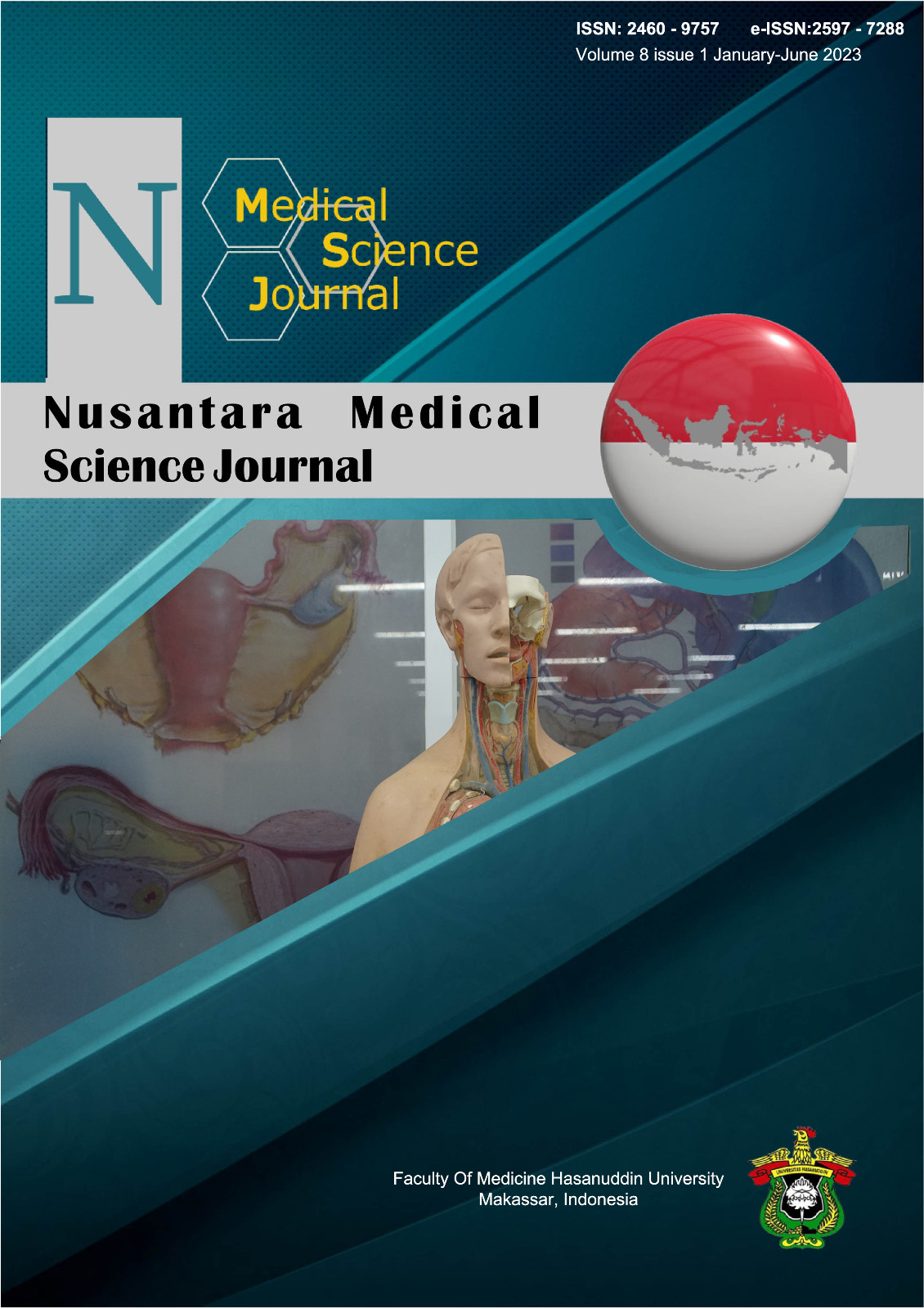A Rare Case of Conjoined Pygopagus Twins: Case Report
DOI:
https://doi.org/10.20956/nmsj.v8i1.19690Abstract
Introduction and importance: Conjoined twins are a complication of monozygotic pregnancies with an incidence of 1:50,000-200,000 of life births. Pygopagus is found around 17% of all types of conjoined twins and has a mortality rate of 23%. Proper diagnosis and management in this case is important.
Presentation of case: A 25-year-old primigravida woman presented at 22 weeks of gestation with a Pygopagus ultrasound result at 17 weeks of gestation. MRI was performed at 25 weeks of gestation, showed conjoined pygopagus twins with lumbosacral spina bifida, without visualized bone union, separated bladder, rectum and anus were difficult to evaluate. Caesarean section (CS) is planned at 36 weeks of gestation and postpartum MRI will be performed in preparation for the separation surgery. The patient was admitted to the hospital at 35 weeks of gestation in the active phase of the first stage of labor, then an urgent caesarean section was performed. Both babies were born with an APGAR score of 2/4/7. The second baby died a few hours after delivery. The separation surgery was performed as an emergency, but the first baby died during the procedure.
Conclusions: Pygopagus requires holistic management, starting from diagnosis, preparation for delivery, to postpartum complications. The proper holistic management is expected to reduce infant and maternal morbidity and mortality.
References
Cunha SS, Coutada RS, Neiva AR, Nogueira R. Early prenatal diagnosis of conjoined twins: a case report. Int J Reprod Contracept Obstet Gynecol. 2018;7:5162-4.
Nyundo M, Jahn A, Kayondo K, Ntirenganya F, Muzungu K, Ntakiyiruta G, et al. Successful separation of conjoined pygopagus twins in African environment with limited resources. Rwanda Medical Journal. 2012;69(3):47-50.
Maternal-Fetal BV. Evidence Based Guidelines. 2017.
Athanasiadis A, Mikos T, Zafrakas M. Prenatal diagnosis and management of conjoined fetuses. Donald school Atlas of Fetal Anomalies 1st edition New Delhi: Jaypee Brothers Medical publishers. 2007:237-44.
Dashe JS, Bloom SL, Spong CY, Hoffman BL. Williams obstetrics: McGraw Hill Professional; 2018.
Ogutu D, Anastasakis E, Chi C, Kadir R. First trimester diagnosis of conjoint (pygopagus) twins: A case report of successful prenatal and postnatal management. Journal of Obstetrics and Gynaecology. 2008;28(3):340-2.
Recio Rodríguez M, Andreu-Vázquez C, Thuissard-Vasallo IJ, Cano Alonso R, Bermejo López C, Tamarit Degenhardt I, Martínez Ten P. Real-Life Diagnostic Accuracy of MRI in Prenatal Diagnosis. Radiology Research and Practice. 2020 Sep 29;2020.
Mian A, Gabra NI, Sharma T, Topale N, Gielecki J, Tubbs RS, Loukas M. Conjoined twins: From conception to separation, a review. Clinical Anatomy. 2017 Apr;30(3):385-96.
Greco PS, Pitts DA, Weadock WJ, Ladino-Torres M, Laventhal NT, Mychaliska G, et al. Conjoined twins: an obstetrician’s guide to prenatal care and delivery management. Journal of Perinatology. 2021:1-8.
O’Brien P, Nugent M, Khalil A, editors. Prenatal diagnosis and obstetric management. Seminars in pediatric surgery; 2015: Elsevier.
Arulkumaran S, Ledger W, Denny L, Doumouchtsis S. Oxford Textbook of Obstetrics and Gynaecology: Oxford University Press; 2019.
Van Mieghem T, De Heus R, Lewi L, Klaritsch P, Kollmann M, Baud D, et al. Prenatal management of monoamniotic twin pregnancies. Obstetrics & Gynecology. 2014;124(3):498-506.
Willobee BA, Mulder M, Perez EA, Hogan AR, Brady A-C, Sola JE, et al. Predictors of in-hospital mortality in newborn conjoined twins. Surgery. 2019;166(5):854-60.
Downloads
Published
How to Cite
Issue
Section
License
Copyright (c) 2023 Nusantara Medical Science Journal

This work is licensed under a Creative Commons Attribution 4.0 International License.









